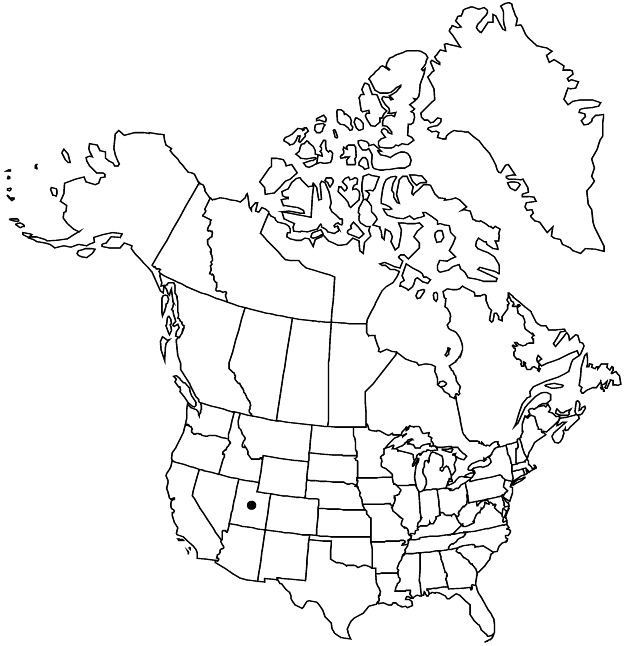Difference between revisions of "Ivesia utahensis"
Proc. Amer. Acad. Arts 17: 371. 1882.
FNA>Volume Importer |
FNA>Volume Importer |
||
| Line 59: | Line 59: | ||
|publication year=1882 | |publication year=1882 | ||
|special status=Conservation concern;Endemic | |special status=Conservation concern;Endemic | ||
| − | |source xml=https://jpend@bitbucket.org/aafc-mbb/fna-data-curation.git/src/ | + | |source xml=https://jpend@bitbucket.org/aafc-mbb/fna-data-curation.git/src/f6b125a955440c0872999024f038d74684f65921/coarse_grained_fna_xml/V9/V9_356.xml |
|subfamily=Rosaceae subfam. Rosoideae | |subfamily=Rosaceae subfam. Rosoideae | ||
|tribe=Rosaceae tribe Potentilleae | |tribe=Rosaceae tribe Potentilleae | ||
Revision as of 20:36, 24 September 2019
Plants green, rosetted to tufted; taproot proximally enlarged, not fleshy. Stems prostrate to ascending, 0.5–1.5(–2) dm. Basal leaves ± tightly cylindric, 2–7(–9) cm; sheathing base glabrous abaxially; petiole 0.5–2 cm, hairs 0.5–1 mm; leaflets 15–20 per side, 2–4 mm, glabrate or sparsely short-hirsute, sparsely to densely glandular, lobes (2–)3–8, narrowly oblanceolate to obovate, apex not setose. Cauline leaves (0–)1, not paired. Inflorescences (5–)10–30-flowered, 1–2.5(–5) cm diam.; glomerules 1–few. Pedicels 1–7 mm. Flowers 7–9 mm diam.; epicalyx bractlets narrowly oblong to oval, 0.8–2 mm; hypanthium shallowly cupulate, (1–)1.5–2 × 2.5–3.5 mm; sepals (1.8–)2–3 mm, acute; petals white, sometimes pink-tinged, oblanceolate to spatulate, 1.8–3 mm; stamens 5, filaments 1.3–1.8 mm, anthers orangish to reddish brown, 0.4–0.6 mm; carpels (1–)2–4, styles 1.5–2 mm. Achenes yellowish green to light tan or gray-brown, 1.7–1.9 mm.
Phenology: Flowering summer.
Habitat: Talus slopes, bare ridges, in high-elevation sagebrush communities, subalpine to alpine conifer woodlands
Elevation: 3200–3700 m
Discussion
Of conservation concern.
Ivesia utahensis is known from the Wasatch and adjacent Uinta Mountains in northern Utah. The species stands as the white-petaled counterpart to the yellow-petaled Sierran I. lycopodioides, possibly indicating a common ancestral stock that was once more continuous across the Great Basin.
Selected References
None.
